Numerical Study of the Thermal and Flow Fields during the Growth Process of 800 kg and 1600 kg Silicon Feedstock
Abstract
:1. Introduction
2. Results and Discussion
3. Materials and Methods
4. Conclusions
Acknowledgments
Author Contributions
Conflicts of Interest
References
- Teng, Y.Y.; Chen, J.C.; Lu, C.W.; Chen, C.Y. The carbon distribution in multicrystalline silicon ingots grown using the directional solidification process. J. Cryst. Growth 2010, 312, 1282–1290. [Google Scholar] [CrossRef]
- Yu, Q.; Liu, L.; Ma, W.; Zhong, G.; Huang, X. Local design of the hot zone in an industrial seeded directional solidification furnace for quasi-single crystalline silicon ingots. J. Cryst. Growth 2012, 358, 5–11. [Google Scholar] [CrossRef]
- Ding, C.; Huang, M.; Zhong, G.; Ming, L.; Huang, X. A design of crucible susceptor for the seeds preservation during a seeded directional solidification process. J. Cryst. Growth 2014, 387, 73–80. [Google Scholar] [CrossRef]
- Nguyen, T.H.T.; Liao, S.H.; Chen, J.C.; Chen, C.H.; Huang, Y.H.; Yang, C.J.; Lin, H.W.; Nguyen, H.B. Effects of the hot zone design during the growth of large size multi-crystalline silicon ingots by the seeded directional solidification process. J. Cryst. Growth 2016, 452, 27–34. [Google Scholar] [CrossRef]
- Wu, Z.; Zhong, G.; Zhou, X.; Zhang, Z.; Wang, Z.; Chen, W.; Huang, X. Upgrade of the hot zone for large-size high-performance multi-crystalline silicon ingot casting. J. Cryst. Growth 2016, 441, 58–64. [Google Scholar] [CrossRef]
- Dropka, N.; Ervik, T.; Czupalla, M.; Kiessling, F.M. Scale up aspects of directional solidification and Czochralski silicon growth processes in traveling magnetic fields. J. Cryst. Growth 2016, 451, 95–102. [Google Scholar] [CrossRef]
- Lan, C.W.; Yang, C.F.; Lan, A.; Yang, M.; Yu, A.; Hsu, H.P.; Hsu, B.; Hsu, C. Engineering silicon crystal for photovoltaics. CrystEngComm 2016, 18, 1474–1485. [Google Scholar] [CrossRef]
- Nguyen, T.H.T.; Chen, J.C.; Hu, C.; Chen, C.H.; Huang, Y.H.; Lin, H.W.; Yu, A.; Hsu, B. Numerical analysis of thermal stress and dislocation density distributions in large size multi-crystalline silicon ingots during the seeded growth process. J. Cryst. Growth 2016. In Press. [Google Scholar] [CrossRef]
- Black, A.; Medina, J.; Pineiro, A.; Dieguez, E. Optimizing seeded casting of mono-like silicon crystals through numerical simulation. J. Cryst. Growth 2012, 353, 12–16. [Google Scholar] [CrossRef]
- Voronkov, V.; Falster, R. Vacancy and self-interstitial concentration incorporated into growing silicon crystals. J. Appl. Phys. 1999, 56, 5975. [Google Scholar] [CrossRef]
- Vizman, D.; Friedrich, J.; Mueller, G. 3D time-dependent numerical study of the influence of the melt flow on the interface shape in a silicon ingot casting process. J. Cryst. Growth 2007, 303, 231–235. [Google Scholar] [CrossRef]
- Vizman, D.; Dadzis, K.; Friedrich, J. Numerical parameter studies of 3D melt flow and interface shape for directional solidification of silicon in a travelling magnetic field. J. Cryst. Growth 2013, 381, 169–178. [Google Scholar] [CrossRef]
- Liu, L.; Yu, Q.; Qi, X.; Zhao, W.; Zhong, G. Controlling solidification front shape and thermal stress in growing quasi-single-crystal silicon ingots: Process design for seeded directional solidification. J. Appl. Therm. Eng. 2015, 91, 225–233. [Google Scholar] [CrossRef]
- Teng, Y.Y.; Chen, J.C.; Huang, B.S.; Chang, C.H. Numerical simulation of impurity transport under the effect of a gas flow guidance device during the growth of multicrystalline silicon ingots by the directional solidification process. J. Cryst. Growth 2014, 385, 1–8. [Google Scholar] [CrossRef]
- Teng, Y.Y.; Chen, J.C.; Lu, C.W.; Chen, H.I.; Hsu, C.; Chen, C.Y. Effects of the furnace pressure on oxygen and silicon oxide distributions during the growth of multicrystalline silicon ingots by the directional solidification process. J. Cryst. Growth 2011, 318, 224–229. [Google Scholar] [CrossRef]
- Ma, W.; Zhong, G.; Sun, L.; Yu, Q.; Huang, X.; Liu, L. Influence of an insulation partition on a seeded directional solidification process for quasi-single crystalline silicon ingot for high efficiency solar cells. Sol. Energy Mater. Sol. Cells 2012, 100, 231–238. [Google Scholar] [CrossRef]
- Wu, Z.; Zhong, G.; Zhang, Z.; Zhou, X.; Wang, Z. Optimization of the high performance multicrystalline silicon solidification process by insulation partition design using transient global simulations. J. Cryst. Growth 2015, 426, 110–116. [Google Scholar] [CrossRef]
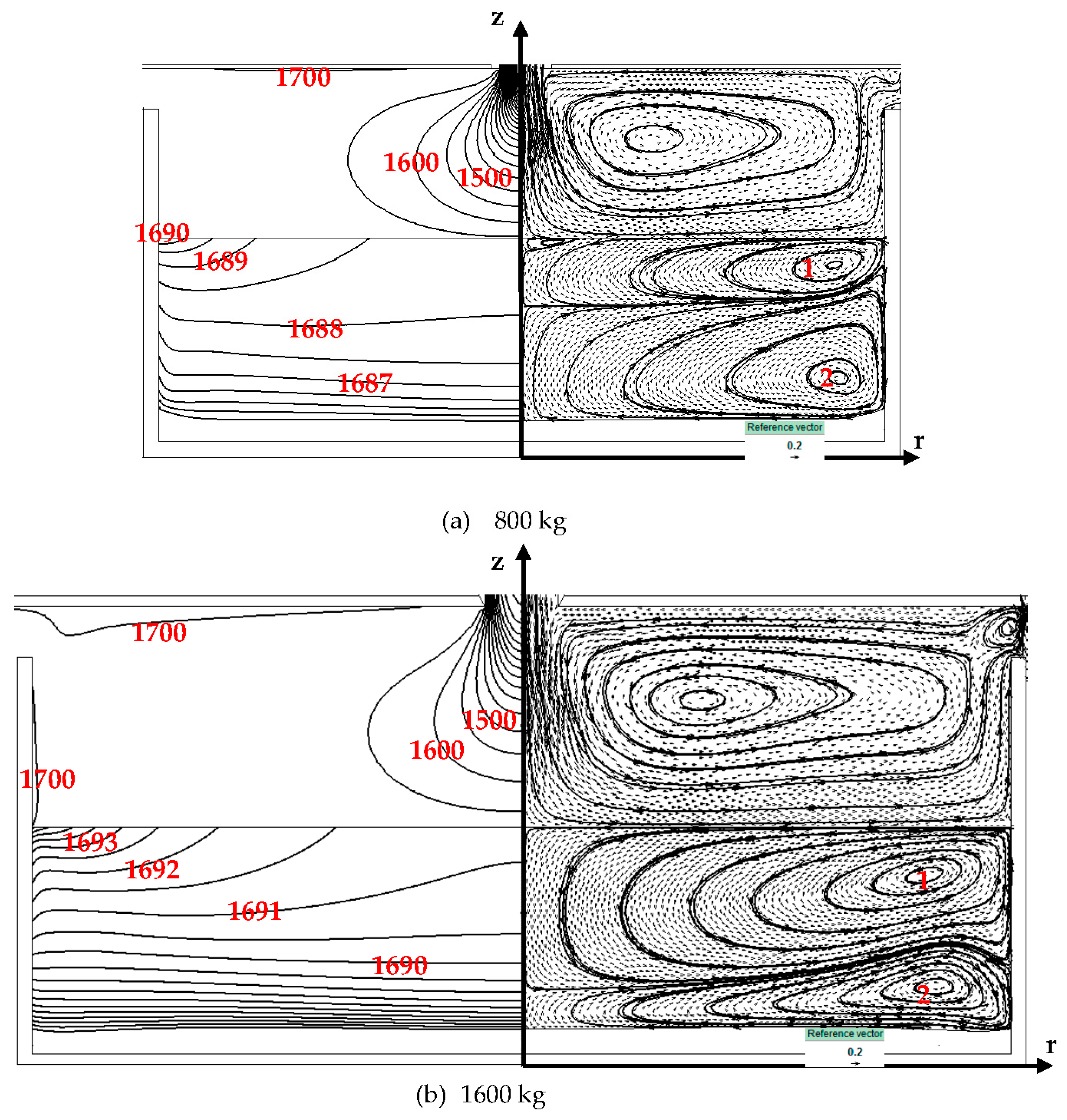
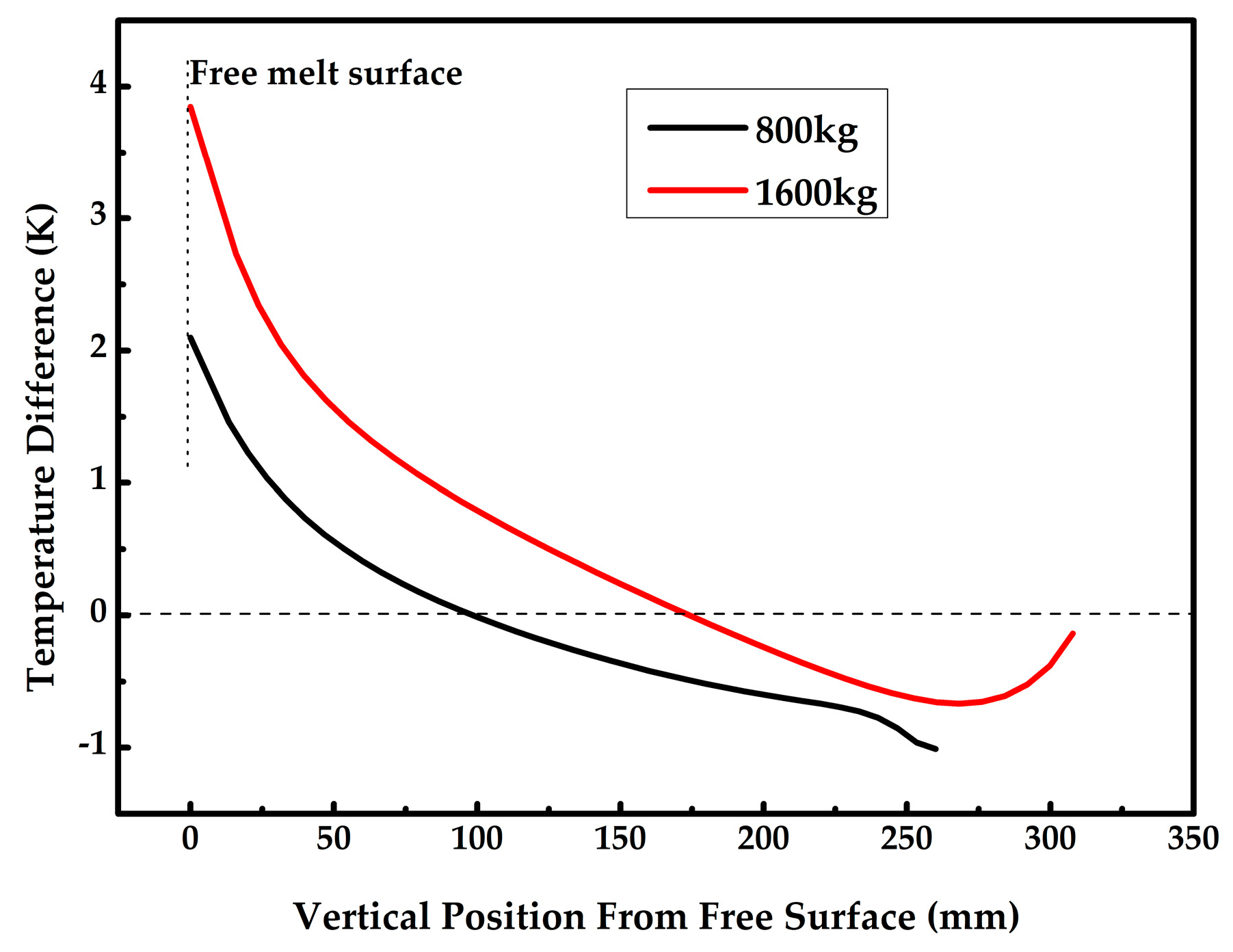

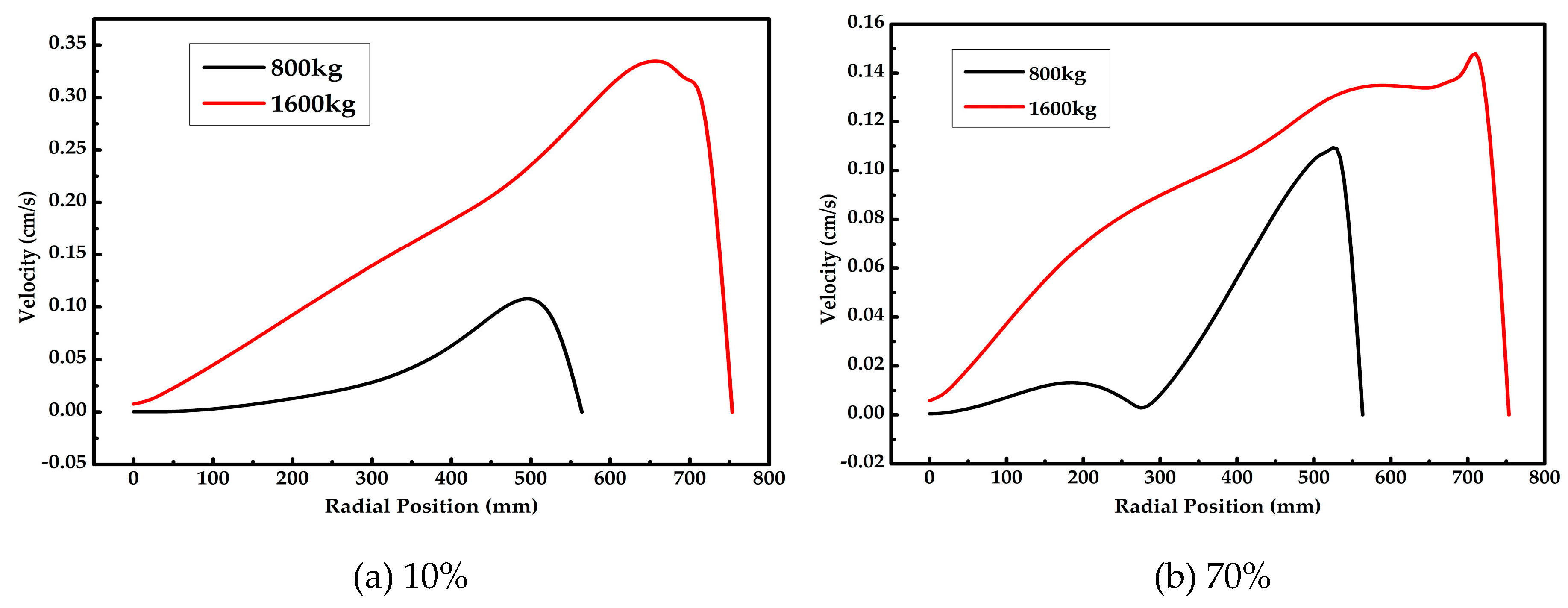
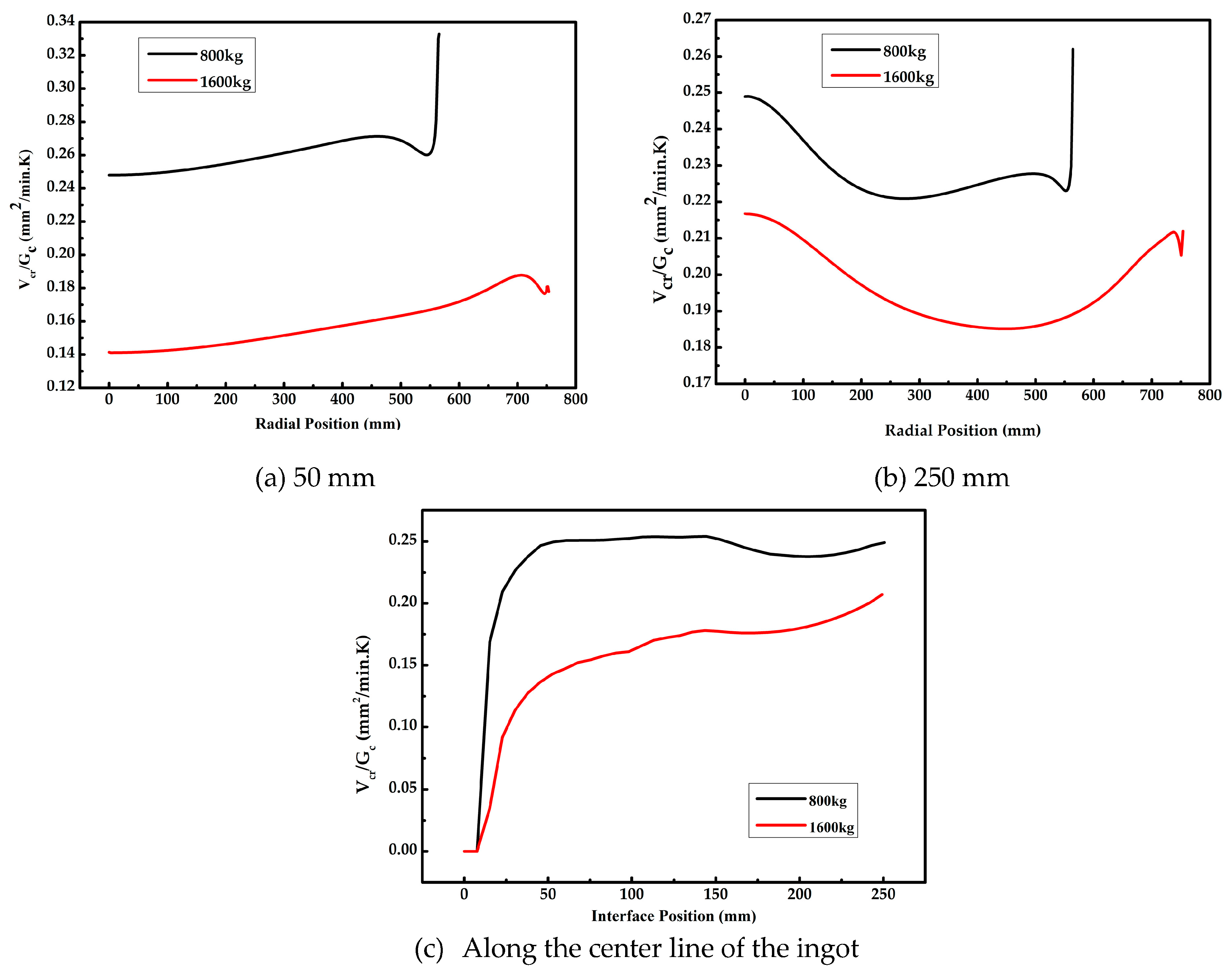
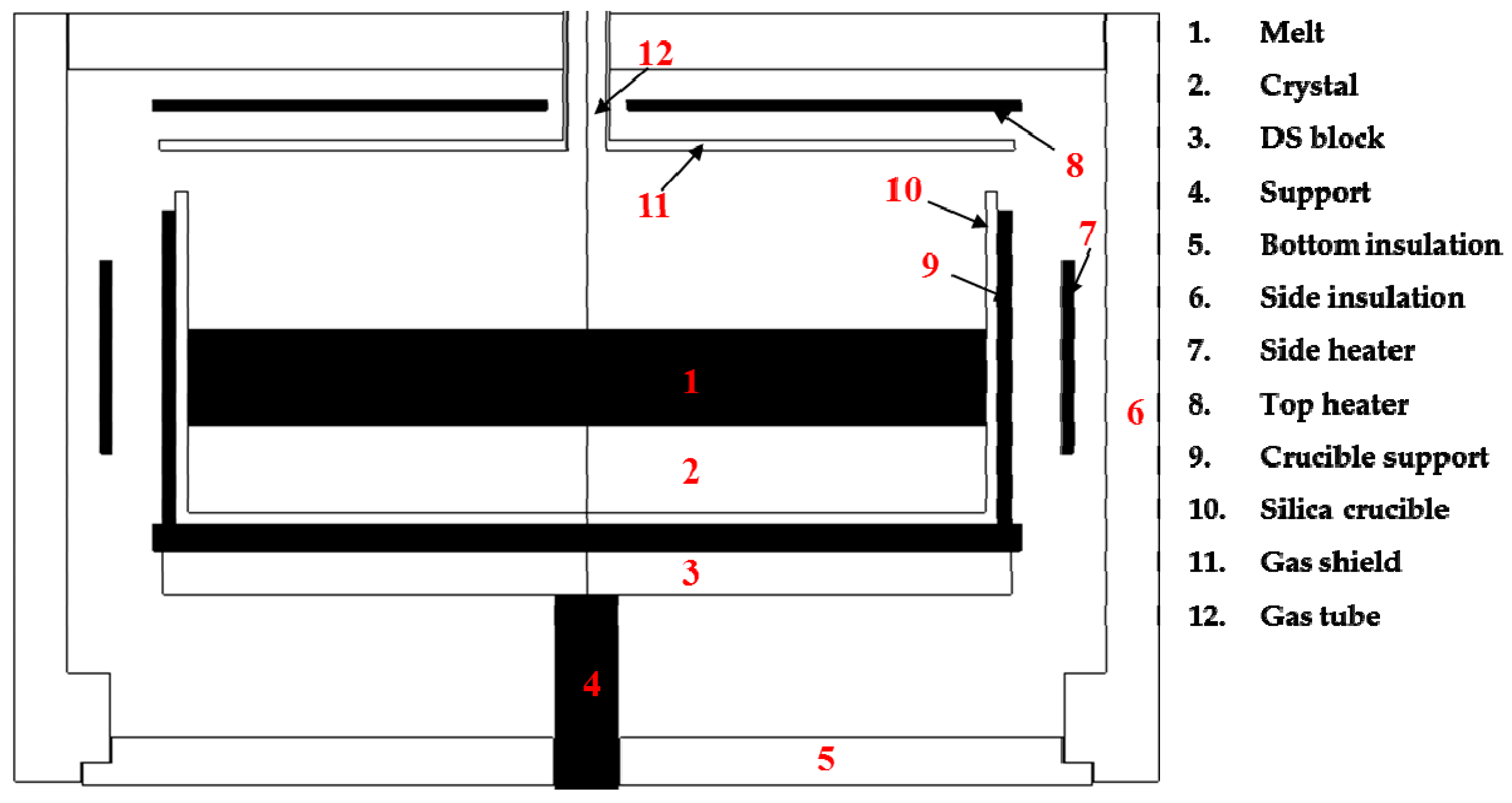
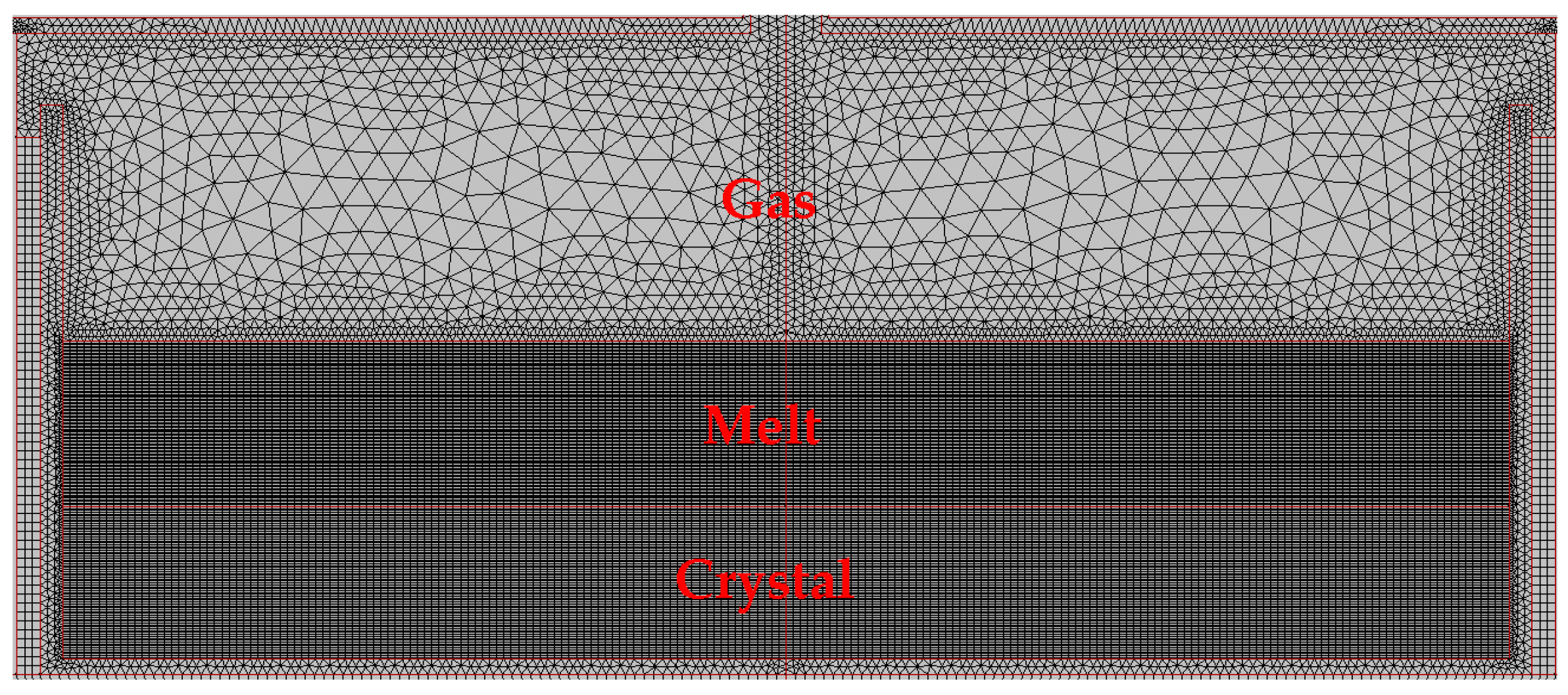
© 2017 by the authors. Licensee MDPI, Basel, Switzerland. This article is an open access article distributed under the terms and conditions of the Creative Commons Attribution (CC BY) license ( http://creativecommons.org/licenses/by/4.0/).
Share and Cite
Nguyen, T.H.T.; Chen, J.C.; Hu, C.; Chen, C.H.; Huang, Y.H.; Lin, H.W.; Yu, A.; Hsu, B.; Yang, M.; Yang, R. Numerical Study of the Thermal and Flow Fields during the Growth Process of 800 kg and 1600 kg Silicon Feedstock. Crystals 2017, 7, 74. https://doi.org/10.3390/cryst7030074
Nguyen THT, Chen JC, Hu C, Chen CH, Huang YH, Lin HW, Yu A, Hsu B, Yang M, Yang R. Numerical Study of the Thermal and Flow Fields during the Growth Process of 800 kg and 1600 kg Silicon Feedstock. Crystals. 2017; 7(3):74. https://doi.org/10.3390/cryst7030074
Chicago/Turabian StyleNguyen, Thi Hoai Thu, Jyh Chen Chen, Chieh Hu, Chun Hung Chen, Yen Hao Huang, Huang Wei Lin, Andy Yu, Bruce Hsu, Michael Yang, and Ray Yang. 2017. "Numerical Study of the Thermal and Flow Fields during the Growth Process of 800 kg and 1600 kg Silicon Feedstock" Crystals 7, no. 3: 74. https://doi.org/10.3390/cryst7030074




